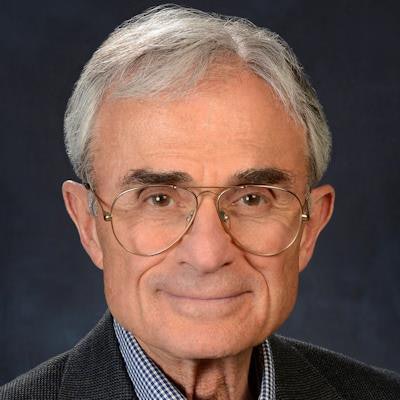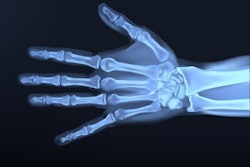
One of the pioneers of research on health services in radiology, Dr. David C. Levin, died on January 15. Levin was one of the first researchers to investigate issues related to turf battles and inappropriate utilization of imaging services and laid the academic groundwork for legislation that rolled back physician self-referral. He was 85.
Levin had a long and storied career in radiology, which he began after first serving in the U.S. Air Force as a fighter pilot in the 1950s. After leaving the military, he earned a medical degree at Johns Hopkins University and completed his radiology residency at the University of California, Los Angeles (UCLA). He went on to work as a radiologist at a number of institutions in California and New York and was acting chair of the department of radiology at Brigham and Women's Hospital from 1985 to 1986.
He joined Thomas Jefferson University in 1986 as chair of the university's radiology department and held the position until 2002, when he stepped down and the department's chair position was named after him.
Sparking an interest
 Dr. David C. Levin.
Dr. David C. Levin.Levin subspecialized in interventional cardiology and was one of the last radiologists to have performed image-guided cardiac interventional procedures before the field was taken over by cardiologists, according to Dr. Vijay Rao, chair of Thomas Jefferson University's radiology department and one of Levin's frequent co-authors.
The loss of interventional cardiology sparked Levin's interest in health services research, according to Rao, particularly as it related to turf battles between medical specialists over control of different procedures. Interventional cardiology was just the first battle in a long struggle between radiologists and cardiologists that later spread to other imaging modalities, including cardiac ultrasound and cardiac nuclear imaging.
Without direct control of patients, radiologists typically found themselves on the losing end of these battles. But Levin, along with Rao and others at Thomas Jefferson, soon began delving into the impact on the health system when physicians self-refer, or perform studies themselves that previously were referred out to other specialties.
When Levin stepped down as chair of the radiology department in 2002, he was replaced by Rao. Now in what she called "semiretirement," Levin was free to focus his energies fully on health services research and soon began what might have been the most productive period of his career.
Levin and Rao began publishing a series of studies on the impact that physician self-referral was having on the utilization of imaging studies, particularly by cardiologists. They mined data from Medicare to compare utilization rates between medical specialties, documenting the massive shift in imaging from radiology departments to other medical specialists, such as cardiologists, many of whom performed studies on an outpatient basis from their offices.
For example, a study presented at RSNA 2002 by Levin and colleagues documented that two-thirds to three-quarters of imaging being performed in private settings was being conducted by nonradiologists. And a 2003 study found that ultrasound utilization by cardiologists grew three times as rapidly as by radiologists from 1993 to 2001. Other studies by Levin, frequently co-authored by Rao and others, documented similar tectonic shifts.
Nonradiologist physicians were able to self-refer due to what many felt was a loophole in the Stark law, the federal law that bars physicians from referring patients to entities in which they had a financial interest. The loophole allows doctors to perform and bill Medicare for studies like imaging exams as long as they take place in their own offices.
The idea was to make imaging more convenient for patients, but the loophole soon led to a purchasing boom as cardiologists and other nonradiologist physicians acquired imaging equipment for their own use -- diverting studies to themselves that once had been referred to radiology departments.
The feds take note
The natural outcome of all this purchasing activity and physician self-referral was exploding healthcare costs. For example, MRI procedure volume at nonradiologist private offices grew almost 25% annually from 2002 to 2007, compared with an 8% annual rate at radiology offices, according to one study led by Levin.
The growth soon drew the attention of the U.S. regulators as they began to confront skyrocketing healthcare costs in the 2000s. And the work being spearheaded by Levin did not go unnoticed, especially at the U.S. Centers for Medicare and Medicaid Services (CMS), according to Rao.
"We both were at a hearing when a staffer was updating CMS, and their answer [to physician self-referral] was to take out the profit," she said. "And that is exactly what they did."
In 2005, the U.S. government passed the Deficit Reduction Act (DRA) of 2005, which dramatically reduced reimbursement for imaging services performed in the outpatient setting. At the same time, CMS regulators opened another front on physician self-referral by implementing additional reductions in Medicare reimbursement to outpatient providers, such as reductions for individual payments and code-bundling.
But the DRA hit outpatient radiology hard as well. Ironically, Levin himself in 2009 documented how nonradiologist physicians were attempting to offset the DRA's reductions by simply performing more exams on their patients -- while radiologists had no such safety valve.
Eventually, the reimbursement reductions were too much, and cardiologists began cutting back on self-referral. They even began selling their imaging equipment to hospitals, and imaging began moving away from the outpatient setting, according to Rao.
Soon the growth in imaging utilization began dropping, but another problem soon emerged: CMS continued putting pressure on imaging reimbursement. Levin's work began shifting subtly, documenting a peak of imaging utilization in 2006 but continued declines since then -- a drop that he believed could actually imperil patient access to imaging if Medicare continued cutting payment rates.
The situation seems to have stabilized in recent years. While radiology no longer enjoys the boom years of the 2000s, when reimbursement levels were flush, the threat of self-referral from cardiologists appears to have subsided. And indeed, radiology has been successful in retaining control of at least one cardiac imaging modality -- cardiac CT -- that for a time appeared to be headed to cardiologists' offices. Much of the credit for radiology's stabilized position can be attributed to the work done by Levin, Rao, and other members of their team.
A champion of radiology
Even as he entered his mid-80s, Levin continued to actively publish, and he was even working on a memoir of his years as a fighter pilot, according to Rao.
Most recently, Levin, Rao, and co-authors Laurence Parker, PhD, and Dr. Sarah Kamel took a look back at the impact of the DRA in a study published January 17, 2020, in the Journal of the American College of Radiology. They found that Medicare payments to nonradiologist physicians for MRI scans fell from a peak of $247.7 million in 2007 to $101.6 million by 2016; for CT, Medicare payments to nonradiologist doctors fell from $284.1 million in 2008 to $94.7 million in 2016. But Medicare payments to radiologists for private office MRI and CT scans also fell during this period.
Meanwhile, in a study in the February edition of Radiology, a team that included Levin found that imaging utilization trends in the commercial insurance sector have largely paralleled those in Medicare, with the rapid growth in utilization coming to an end (although they found renewed growth in CT).
Rao said that -- other than his service as a fighter pilot -- Levin was proudest of the work he did in health services research over the last 18 years. In particular, he was seen as a champion of radiology, and he was on friendly terms with both academic and private-practice radiology.
"That's what made him a household name in radiology," Rao told AuntMinnie.com. "People looked at him as a champion of radiology, that radiology should be done by trained physicians who were radiologists."
The impact of Levin's passing has reverberated throughout radiology, not only due to his research activity but also his work in mentoring and educating future leaders and researchers, according to Dr. Geraldine McGinty, chair of the ACR's Board of Chancellors.
"Our profession mourns the loss of this legendary physician-scientist -- Dave's foundational work in the economics of imaging, his courage in always asking the tough questions, and his generosity in mentoring future leaders are his legacy," McGinty said. "I feel fortunate to have known him as a mentor and a friend. He will be greatly missed."
As the David C. Levin professor and chair of the radiology department at Thomas Jefferson University, Rao plans to honor Levin's legacy by continuing to invest in health services research.
"I am confident his legacy will continue at Jefferson and we will continue with a strong health services research program, although he can never be replaced," Rao said. "We want to do honor to his legacy."



















